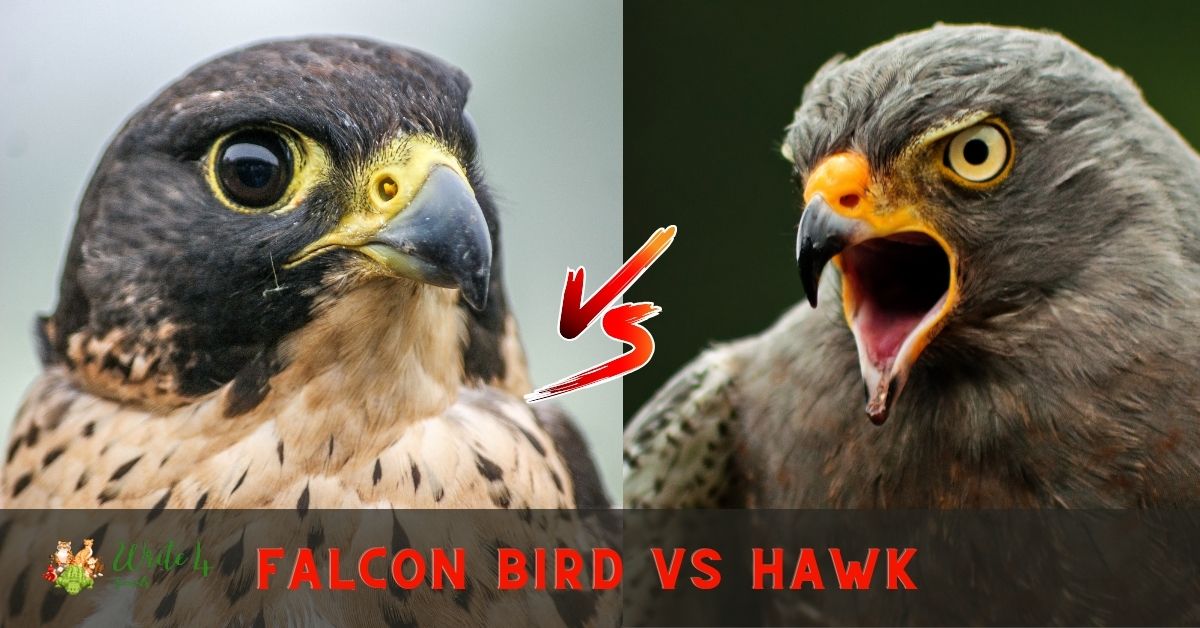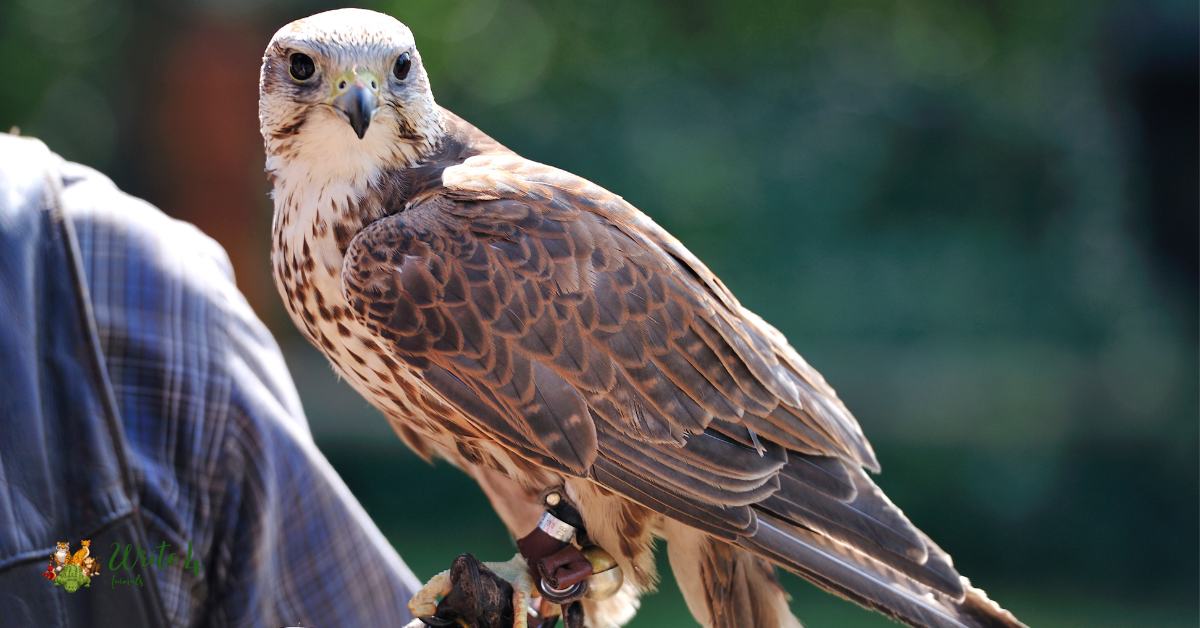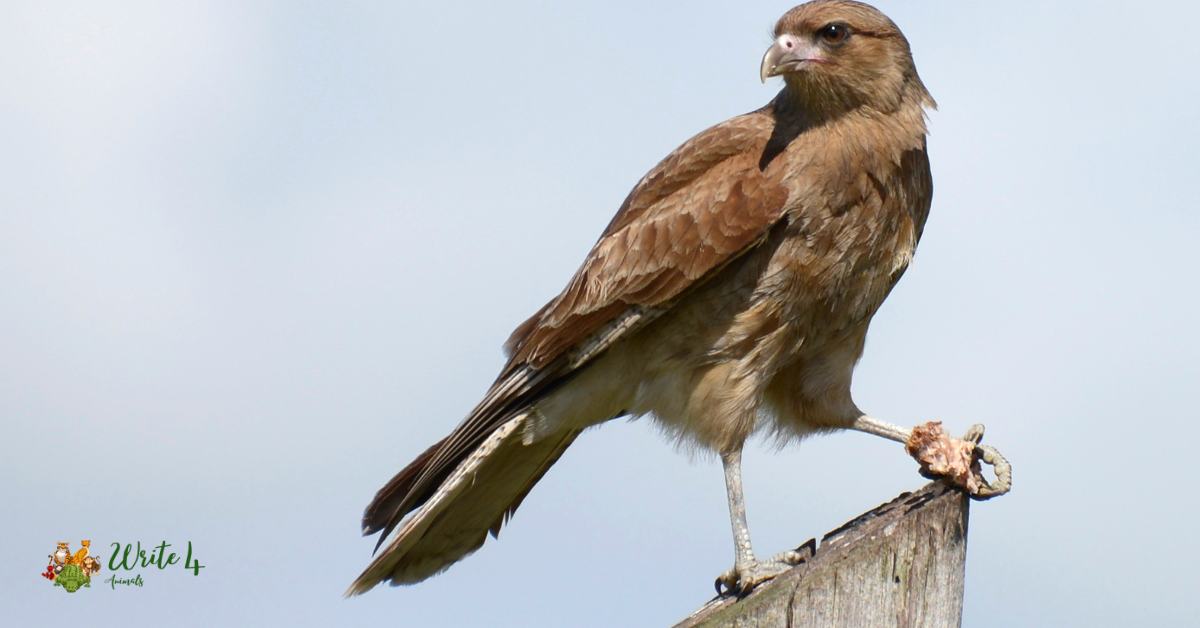Birds of prey, often known for their majestic flight and predatory prowess, encompass a diverse array of species. Among these, Falcon bird vs Hawk stand out as some of the most iconic and formidable hunters. While they share certain characteristics, they also possess distinct traits that set them apart.
In this comprehensive comparison, we delve into the fascinating world of Hawk bird vs Falcon, exploring their anatomy, behavior, habitats, and hunting techniques.
Falcon Bird vs Hawk | Hawk bird vs Falcon
History and Origins: Falcon Bird vs Hawk
Falconry, the art of training birds of prey for hunting, has a rich history dating back thousands of years, with both Falcon bird vs Hawk playing prominent roles. Falcons have been prized for their exceptional speed and agility in capturing prey, earning them a revered status among royalty and nobility in ancient civilizations such as Mesopotamia, Egypt, and medieval Europe.
Hawks, on the other hand, have been utilized for their versatility and adaptability in various hunting environments, with species like the Harris’s hawk revered by Native American cultures for their cooperative hunting behaviors.
While falcons and hawks share a common ancestry within the Accipitridae family, their evolutionary paths have diverged to suit different ecological niches and hunting strategies, resulting in distinct anatomical features and behaviors that continue to fascinate and inspire humans to this day.
| Appearance | Sleek, streamlined | Bulkier, broader wings |
| Speed | Extremely fast | Fast, but not as swift as falcons |
| Hunting Strategy | Aerial pursuits, high-speed dives | Sit-and-wait, ambush |
| Diet | Primarily birds and bats | Varied, including mammals, reptiles, and insects |
| Habitat | Open landscapes, coastal cliffs | Diverse habitats including forests, prairies, and urban areas |
| Reproductive Behavior | Typically monogamous | Typically monogamous |
| Conservation Status | Varied, some species endangered | Varied, some species endangered |
| Aspect | Falcon | Hawk |
Appearance and Characteristics: Falcon Bird vs Hawk
Falcons and hawks exhibit distinct appearances and characteristics that set them apart in the avian world. Falcons are characterized by their sleek, aerodynamic bodies, long pointed wings, and sharp, hooked beaks. Their streamlined shape enables them to achieve incredible speeds and maneuverability during flight, making them efficient hunters of agile prey such as birds and bats.
In contrast, hawks typically possess broader wings and bulkier bodies, adapted for soaring and gliding over open landscapes or navigating through dense vegetation in search of prey. Many hawk species also feature distinctive plumage patterns, with variations in coloration and markings that serve as camouflage and species recognition.
While both Hawk bird vs Falcon belong to the same family of birds of prey, their unique anatomical features and adaptations reflect their specialized hunting strategies and ecological roles within their respective habitats.
Speed: Falcon Bird vs Hawk
Speed is a defining attribute of falcons, particularly the peregrine falcon, which holds the title of the fastest animal on Earth. Peregrine falcons are capable of achieving staggering speeds of over 240 miles per hour (386 kilometers per hour) during high-speed dives, or “stoops,” when pursuing prey.
Their exceptional velocity, aided by streamlined bodies and powerful wing muscles, enables them to overtake and capture agile birds mid-flight with remarkable precision. In comparison, while hawks are also skilled flyers, they generally do not match the extreme velocities of falcons.
However, hawks compensate with endurance and agility, utilizing soaring and gliding techniques to cover vast distances in search of prey or to engage in territorial displays. Overall, the speed capabilities of falcons and hawks reflect their respective hunting strategies and adaptations to thrive in diverse environments.
Behavior and Hunting Strategies: Falcon Bird vs Hawk
One of the key distinctions between Falcon bird vs Hawk lies in their hunting techniques. Falcons are renowned for their aerial hunting prowess, employing high-speed dives, or “stoops,” to catch agile prey such as birds and bats mid-flight. Their exceptional vision and maneuverability enable them to execute precise strikes with remarkable accuracy. Peregrine falcons, with their extraordinary diving abilities, excel at hunting in open spaces and urban environments alike.
On the other hand, hawks employ a variety of hunting strategies suited to their ecological niche. Many hawk species are sit-and-wait predators, perching patiently on vantage points before swooping down to ambush prey on the ground or in foliage.
Red-tailed hawks, for example, often hunt small mammals like rodents and rabbits, utilizing their keen eyesight to spot movements from a distance. Additionally, some hawks, such as the Cooper’s hawk, are adept at navigating dense forests and pursuing prey through intricate maneuvers.
Habitats and Distribution: Hawk bird vs Falcon
While falcons and hawks can be found across diverse habitats worldwide, they tend to favor different environments based on their hunting preferences and adaptations. Falcons are commonly associated with open landscapes, including grasslands, deserts, and coastal cliffs. Peregrine falcons, in particular, thrive in cliffside habitats where they nest and launch their high-speed aerial assaults.
In contrast, hawks exhibit greater versatility in habitat selection, occupying a range of ecosystems from forests and woodlands to prairies and urban areas. Red-tailed hawks, with their adaptable nature, have successfully colonized diverse habitats across North America, from rural farmlands to bustling cityscapes. Their ability to thrive in various environments underscores their resilience and ecological flexibility.
Conservation Status and Human Interactions: Hawk bird vs Falcon
Both falcons and hawks face various threats in the modern world, including habitat loss, pollution, and persecution. Historically, falcon populations, particularly the peregrine falcon, suffered dramatic declines due to pesticide exposure, notably DDT, which led to eggshell thinning and reproductive failure. However, concerted conservation efforts, including captive breeding programs and regulatory measures, have contributed to the recovery of many falcon species in recent decades.
Similarly, hawks confront ongoing challenges, such as habitat fragmentation and collision with man-made structures like power lines and wind turbines. Despite these obstacles, hawks continue to adapt and thrive in human-altered landscapes, serving as vital indicators of ecosystem health and biodiversity.
Diet and Feeding Behavior: Falcon Bird vs Hawk
The diet and feeding behavior of falcons and hawks reflect their respective hunting strategies and ecological roles within their habitats. Falcons, renowned for their aerial prowess, primarily prey upon other birds and bats, relying on their exceptional speed and agility to pursue and capture prey mid-flight. Peregrine falcons, in particular, specialize in hunting medium-sized birds, utilizing high-speed dives, or “stoops,” to deliver lethal strikes with their sharp talons.
In contrast, hawks exhibit greater dietary diversity, preying upon a wide range of small mammals, reptiles, amphibians, and insects. Species like the red-tailed hawk often hunt from elevated perches, scanning the ground for movements before launching swift attacks on unsuspecting prey. While falcons and hawks employ different hunting techniques, both play vital roles in controlling prey populations and maintaining ecological balance within their respective ecosystems.
Reproduction and Life Cycle: Hawk bird vs Falcon
The reproductive strategies and life cycles of falcons and hawks showcase remarkable adaptations to ensure the survival of their offspring in diverse environments. Falcons typically form monogamous breeding pairs, with elaborate courtship displays and territorial behaviors preceding the nesting season. Peregrine falcons construct nests on cliff ledges or tall structures, utilizing scrapes lined with gravel or vegetation to protect their eggs from rolling.
The female typically lays a clutch of 3-4 eggs, which both parents incubate for around a month before hatching. Hatchlings are altricial, requiring intensive parental care and feeding until they fledge and become independent several weeks later. Hawks, likewise, exhibit similar breeding behaviors, with species like the red-tailed hawk building large stick nests in trees or on man-made structures.
However, hawk species may vary in their nesting habits and reproductive strategies, with some forming cooperative breeding groups or nesting solitarily depending on habitat availability and social dynamics. Overall, the reproductive success of fHawk bird vs Falcon on intricate behaviors and adaptations honed over generations to ensure the survival of their species in dynamic and challenging environments.
Conclusion
In summary, the comparison between falcons and hawks unveils a rich tapestry of evolutionary adaptations, behavioral strategies, and ecological roles. While they share common ancestry and ecological niches as birds of prey, their distinct anatomical features, hunting techniques, and habitat preferences highlight the diverse ways in which they have evolved to thrive in their respective environments.
By understanding and appreciating these differences, we can foster greater conservation awareness and stewardship to ensure the continued survival of these magnificent raptors for generations to come.
Frequently Asked Questions
What is the main difference between falcons and hawks?
Falcons are known for their speed and agility in aerial pursuits, while hawks typically have broader wings and hunt using various strategies such as sit-and-wait tactics.
How do falcons and hawks differ in appearance?
Falcons have sleek, streamlined bodies and long pointed wings, whereas hawks often have bulkier bodies and broader wings.
What do falcons and hawks eat?
Falcons primarily prey on other birds and bats, while hawks have a more varied diet including small mammals, reptiles, and insects.
Which bird is faster, falcon or hawk?
Falcons, particularly the peregrine falcon, are renowned for their incredible speed, with diving speeds exceeding 240 miles per hour, making them the fastest animals on Earth.
Where do falcons and hawks live?
Falcons often inhabit open landscapes such as grasslands and coastal cliffs, while hawks can be found in a variety of habitats including forests, prairies, and urban areas.
Are falcons and hawks endangered?
While some species of falcons and hawks face conservation challenges, many populations are stable or recovering thanks to conservation efforts and habitat protection measures.
Do falcons and hawks mate for life?
Falcons typically form monogamous breeding pairs and may mate for life, while hawks also exhibit monogamous behavior but may occasionally change partners.
How do falcons and hawks hunt?
Falcons employ high-speed dives or “stoops” to catch prey mid-flight, whereas hawks use various hunting strategies including perching and ambushing prey on the ground or in foliage.
Recommended
1. Silkie Rooster vs Hen Comparison
2. Blue Whale vs Humpback | Humpback vs Blue whale
3. Polar bear vs Grizzly bear comparison |Grizzly bear vs Polar bear


